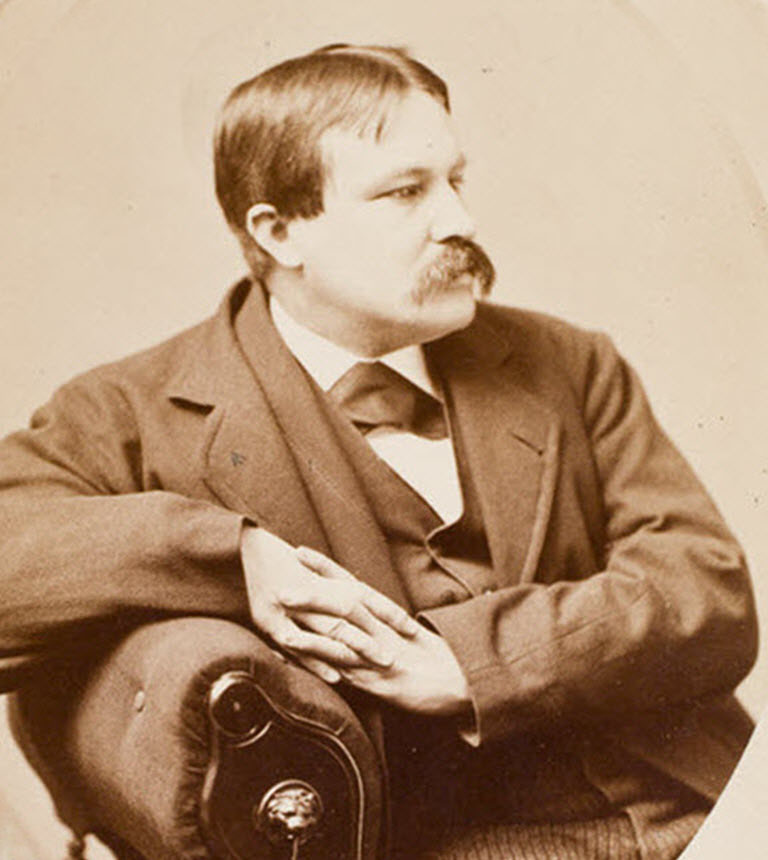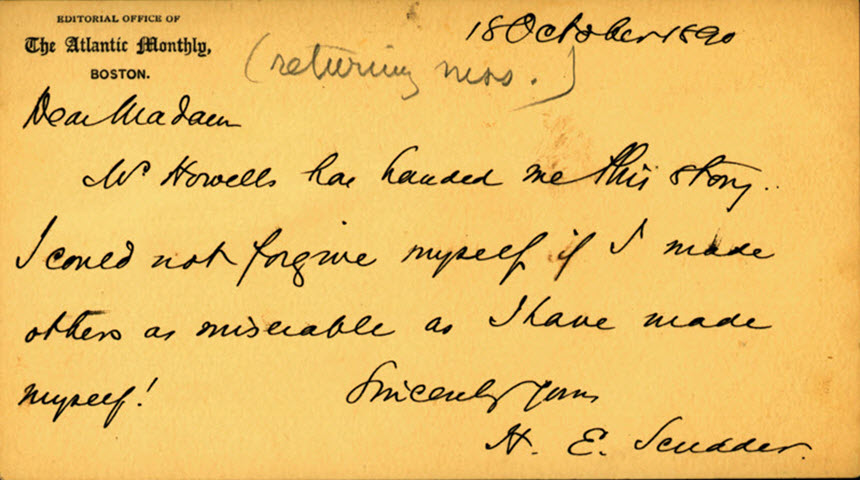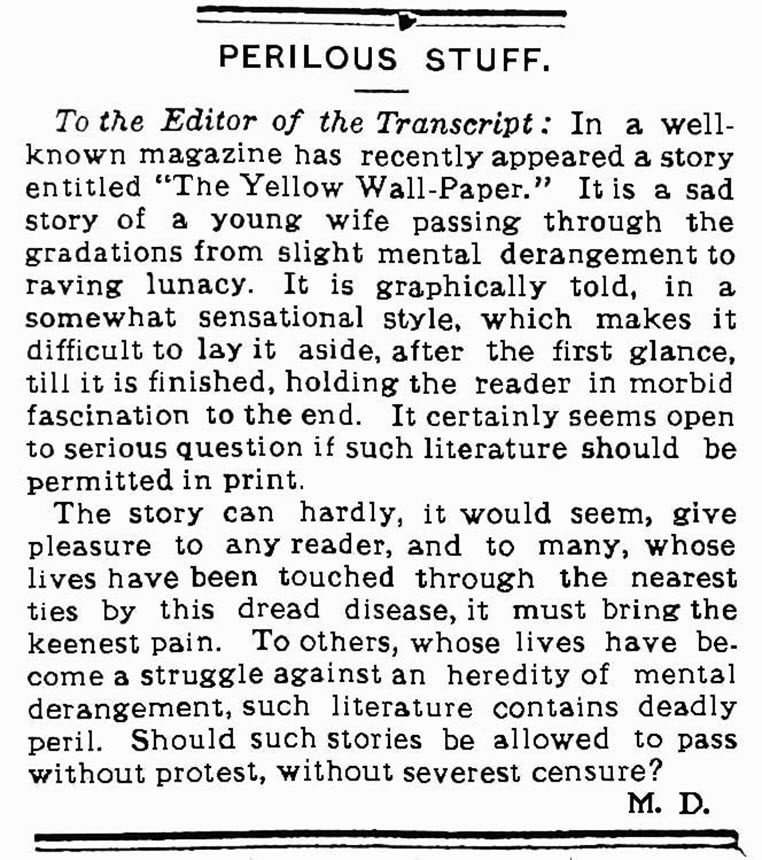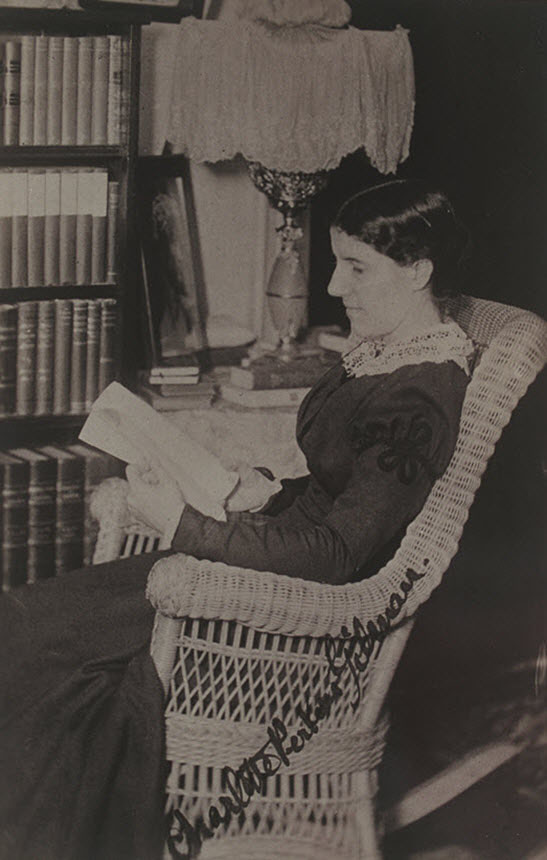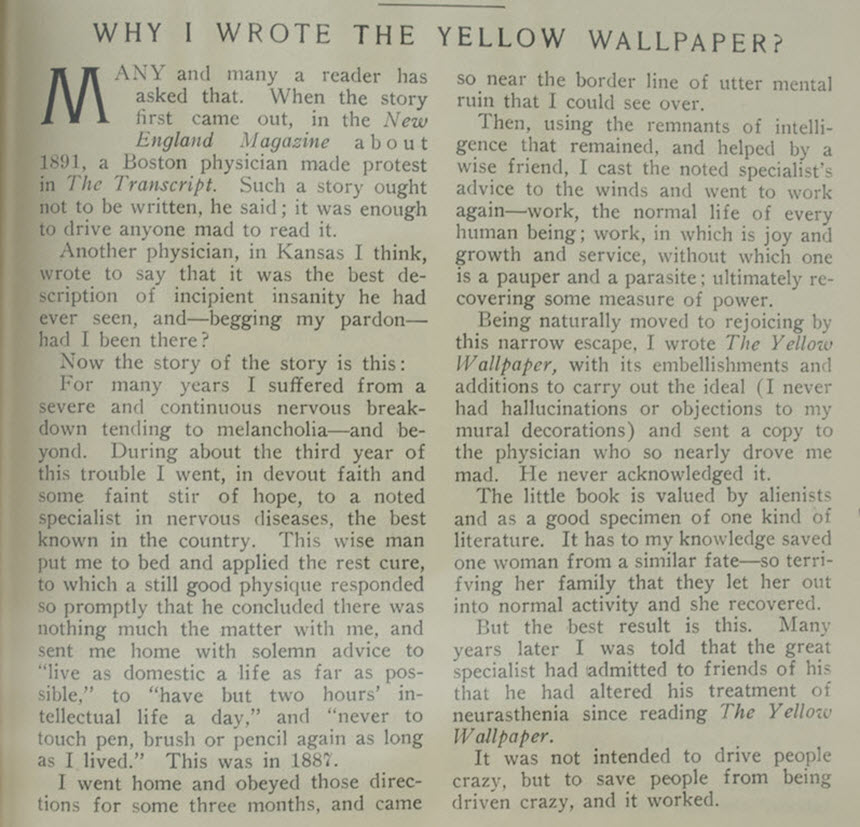Scudder rejected the piece outright. Instead, “The Yellow Wall-Paper” was published more than a year after it was written, in The New England Magazine, in January 1892. Readers were intrigued and disturbed.
William Dean Howells, 1875
Courtesy Special Collections, Fine Arts Library, Harvard College Library
William Dean Howells, a prominent author and critic who became an ardent fan of Charlotte Perkins Gilman’s work, sent her story “The Yellow Wallpaper” to his friend and editor, Horace E. Scudder, for publication in The Atlantic Monthly.
Letter of rejection from the editor of The Atlantic Monthly, 1890
Courtesy Schlesinger Library, Radcliffe Institute, Harvard University
Scudder rejected the piece outright. Instead, “The Yellow Wall-Paper” was published more than a year after it was written, in The New England Magazine, in January 1892. Readers were intrigued and disturbed.
“Perilous Stuff,” Boston Evening Transcript, April 8, 1892
Courtesy Schlesinger Library, Radcliffe Institute, Harvard University
In a letter to the editor, a respondent signing off only as “M. D.” described the piece as sensational and morbidly fascinating, and questioned if such literature should even be permitted in print.
Charlotte reading in her library, ca. 1900
Courtesy Schlesinger Library, Radcliffe Institute, Harvard University
Charlotte argued that the story was beneficial, not dangerous, and suggested the letter must have been written by a physician, (an M.D.), who only criticized the tale because of its negative representation of the medical profession.
“Why I Wrote ‘The Yellow Wallpaper’,” The Forerunner, Charlotte Perkins Gilman, October 1913
Courtesy Schlesinger Library, Radcliffe Institute, Harvard University
Years after the publication of “The Yellow Wallpaper,” Charlotte recounted her extreme difficulty with the prescribed rest cure. She abandoned the rest cure in favor of an active work lifestyle in which she said “is joy and growth and service.”
William Dean Howells, 1875
Courtesy Special Collections, Fine Arts Library, Harvard College Library
William Dean Howells, a prominent author and critic who became an ardent fan of Charlotte Perkins Gilman’s work, sent her story “The Yellow Wallpaper” to his friend and editor, Horace E. Scudder, for publication in The Atlantic Monthly.
Letter of rejection from the editor of The Atlantic Monthly, 1890
Courtesy Schlesinger Library, Radcliffe Institute, Harvard University
Scudder rejected the piece outright. Instead, “The Yellow Wall-Paper” was published more than a year after it was written, in The New England Magazine, in January 1892. Readers were intrigued and disturbed.
“Perilous Stuff,” Boston Evening Transcript, April 8, 1892
Courtesy Schlesinger Library, Radcliffe Institute, Harvard University
In a letter to the editor, a respondent signing off only as “M. D.” described the piece as sensational and morbidly fascinating, and questioned if such literature should even be permitted in print.
Charlotte reading in her library, ca. 1900
Courtesy Schlesinger Library, Radcliffe Institute, Harvard University
Charlotte argued that the story was beneficial, not dangerous, and suggested the letter must have been written by a physician, (an M.D.), who only criticized the tale because of its negative representation of the medical profession.
“Why I Wrote ‘The Yellow Wallpaper’,” The Forerunner, Charlotte Perkins Gilman, October 1913
Courtesy Schlesinger Library, Radcliffe Institute, Harvard University
Years after the publication of “The Yellow Wallpaper,” Charlotte recounted her extreme difficulty with the prescribed rest cure. She abandoned the rest cure in favor of an active work lifestyle in which she said “is joy and growth and service.”
Scudder rejected the piece outright. Instead, “The Yellow Wall-Paper” was published more than a year after it was written, in The New England Magazine, in January 1892. Readers were intrigued and disturbed.





